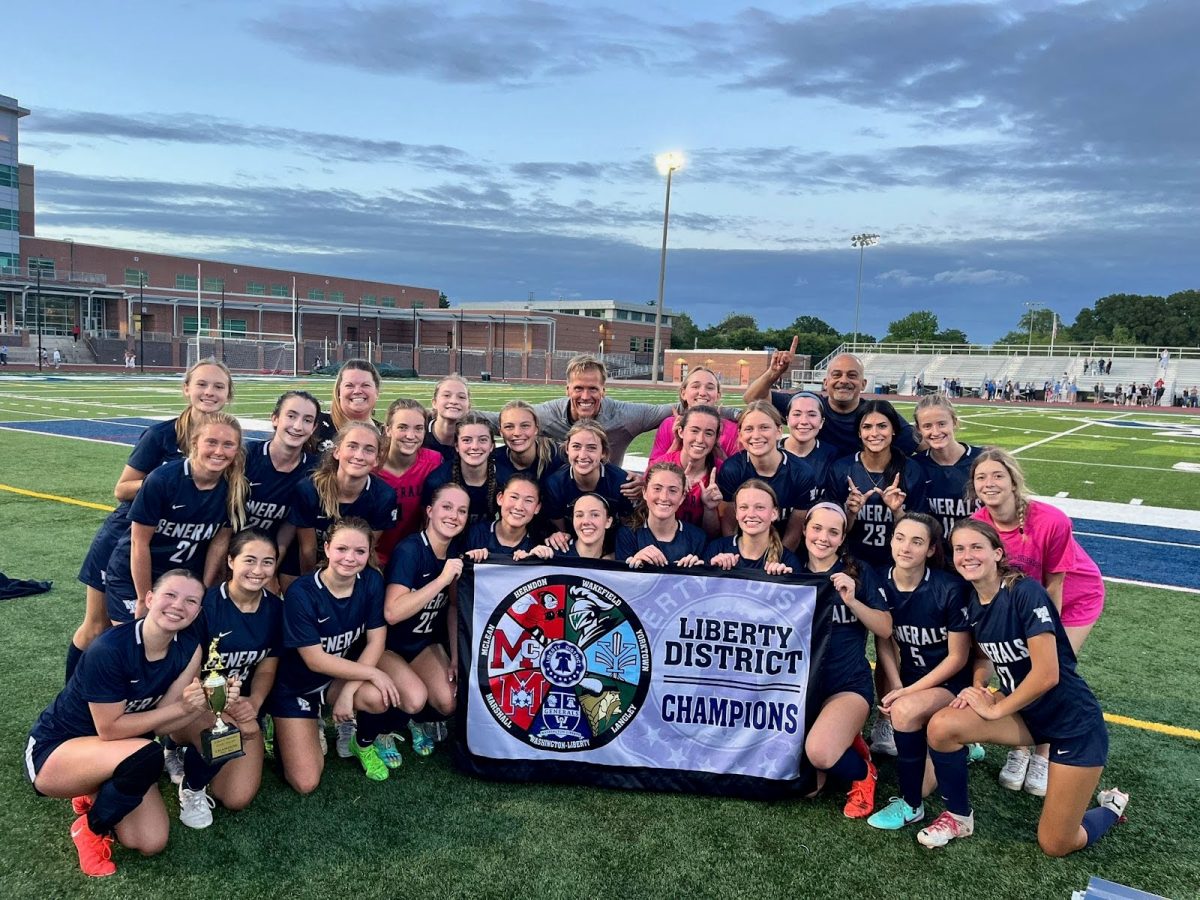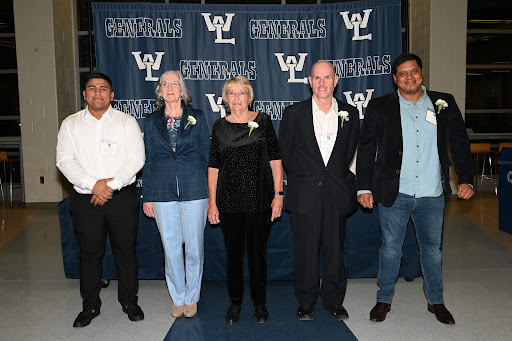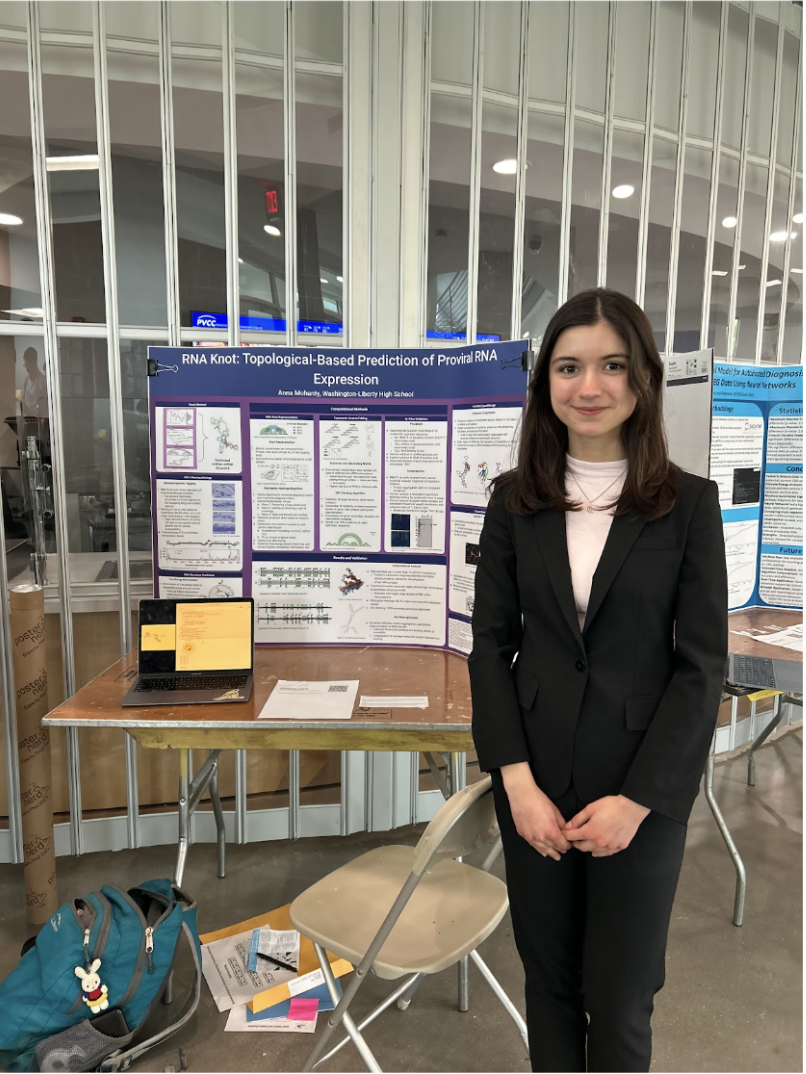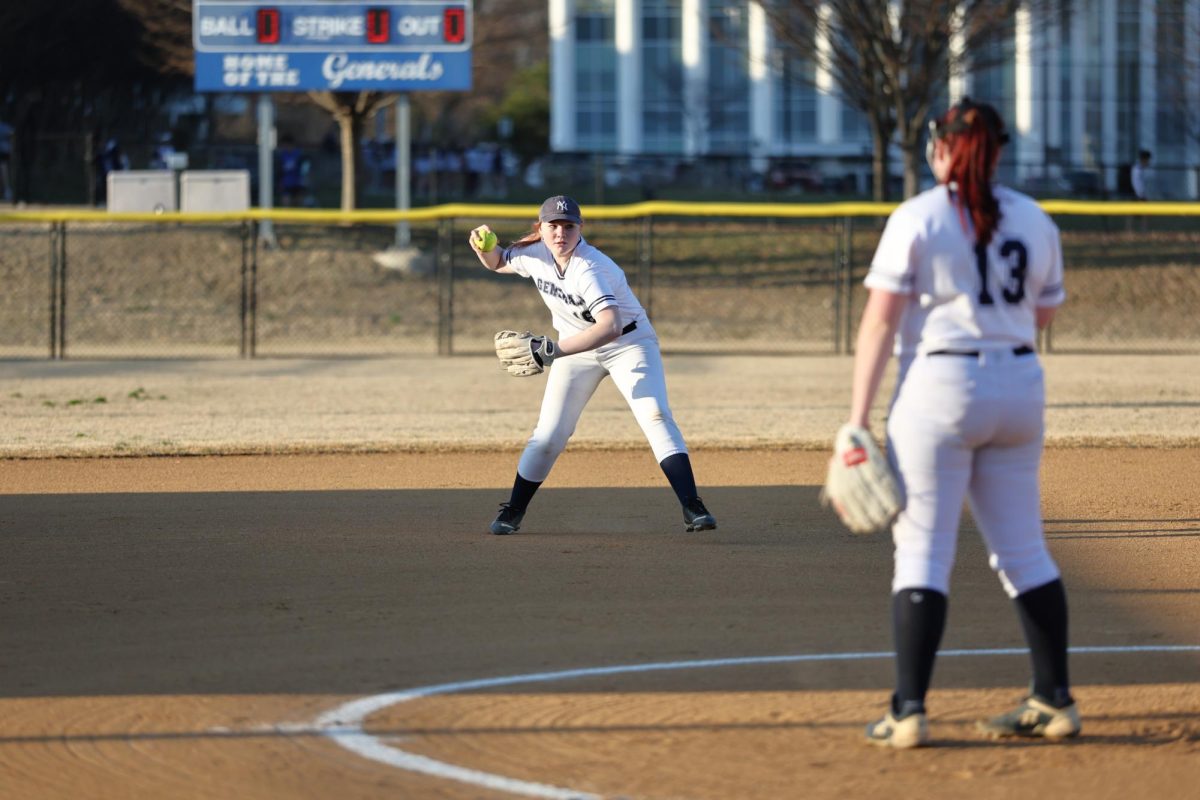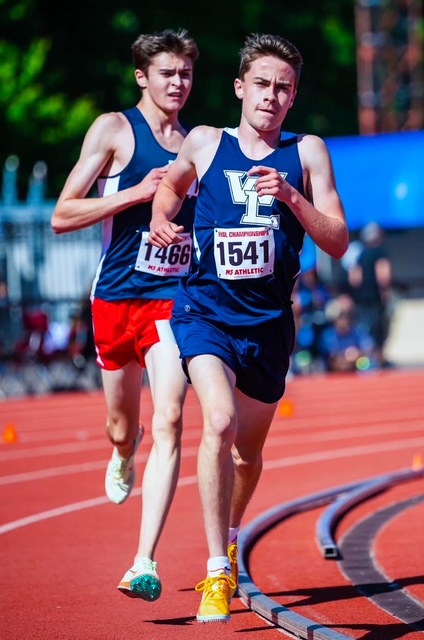Many student-athletes dream of furthering their athletic careers beyond high school, but that is easier said than done. According to NCAA.org, only 7.9% of high school girls’ soccer players will play in college. This year, the school has four athletes among this percentage: Danicka Miller, Scarlett Smith, Charlotte Kulikosky, and Frances Shapiro.
These athletes have worked for years, putting countless hours of practice, strength training, technique building, traveling, and more into their sport. With their commitment, soccer has consequently become a huge part of their lives. Charlotte Kulikosky, the team’s goalie, said that in the fifteen years she has been playing, soccer has meant a lot to her.
“Soccer has definitely been something that has kept me driven, because you have to balance school and soccer, but it’s also given me a lot of friends, has given me confidence in other aspects of my life, and has taught me how to work with other people,” she said.
Frances Shapiro, who was named Most Valuable Player for her contributions to a recent girls’ varsity basketball tournament for the school, agreed. She plays center midfield.
“I’ve been a part of travel teams since third grade, and it’s been a huge part of my identity,” she said. “It’s been a huge part of my life. I think it’s been such a good way to make friends, make connections, and stay active.”
Shapiro is going to Denison University, a Division III school, and she said that her decision was an important one.
“I feel like it was the right balance for me because I didn’t know if I wanted to play Division I soccer. I know that’s just a lot of time commitment to just soccer, and I want to focus on academics and other parts of my life as well. So, it was the right balance for me in that way,” she said.
Kulikosky also commented on the meaning of her college career. She is committed to the University of Delaware, a Division I school, where she plans on double majoring in international relations and economics.
“It means that all the work that I put in now has actually paid off and that I’ve been able to repay my parents for all the time they put into helping me and being there for me during my youth soccer years,” Kulikosky said. “But soccer gives me a lot of joy, so I’m just really excited to continue that.”
Scarlett Smith agreed with the sentiment, saying that playing in college was an achievement she had been working toward. She is going to Manhattan University, a Division I school, and plays forward.
“I think it’s just always been my goal and my dream. So, I kind of think it’s fulfilling. All this time and effort I’ve put into it has kind of culminated in playing college, and I probably won’t play after. So I guess it’s just kind of my soccer journey at the end of it,” she said.
But college sports are not all fun and games. Even though the result is something athletes show immense gratitude for, the recruitment process is notoriously draining. Danicka Miller commented on her experiences. Miller is going to play Division I for Harvard University as a defender.
“The recruiting process is hard. It’s very cutthroat. A lot of coaches and teams treat it like a business because it is. It’s about money and numbers and winning and losing. So most of the time, they don’t care about the person; they just care about your abilities on the field. I’m lucky enough to now have found a school that actually cares about me as a person and wants to make it a family. But yeah, the recruiting process is really challenging,” she said.
Of course, not everyone’s recruitment process is the same, but it is important to keep pushing through the ups and downs.
“It’s different for everyone, but it’s a lot of work and a lot of behind-the-scenes work that a lot of people don’t really think about,” Shapiro said. “I think in the process, it’s important to be open and not be afraid of being rejected because that’s going to happen. But it’s all worth it in the end. So, go through it, even though it can be really stressful.”
Among recruiting, many things are extremely challenging when playing soccer. Historically, female athletes have had very different experiences from male athletes.
“With the recruiting process, I would say female athletes have it a little easier because male athletes have a lot more competition from international pools. But speaking on the actual play and the opportunities you get, it’s a lot harder as a female athlete, even though Arlington is pretty good about it. But if you go even just to other places in Virginia, female athletes don’t have as great facilities. They don’t have as many opportunities to get the same amount of time on the field and train like the male athletes do,” Miller said.
Smith shared her viewpoints, as she has trained abroad and noticed the differences in the sports environments in other places.
“I feel like I’ve been in a very good environment so far. Especially just being in this area, there’s a lot of opportunity. But I know in other countries, like in Trinidad, where I sometimes play over the summer, I have to train on a men’s team because they don’t have good enough female teams, which is unfortunate. I think my experience has been good because I’m in this area, but I know in other areas, they are not that fortunate,” she said.
Kulikosky had a similar outlook.
“I think the opportunities are the same, but sometimes the results are not. There are as many women’s soccer programs, if not more than men’s soccer programs in college, and also at the high school level. But if a female athlete is going to play pro, the minimum salary for the NWSL, which is the professional league, is very low,” she said. “I don’t know if I would consider playing pro because if you’re not at the top of the stack, then you’re not really getting paid a living wage.”
Despite these discouraging insights, the girls on the team said that they really enjoyed playing for the school.
“If I had to describe the team in one word, it’d be hype,” Kulikosky said. “It’s just so fun. And I feel like that’s something that I really love because club soccer is really where I got recruited out of, and that’s more like the college space. But then when you get to high school, it’s still a really high level, but it’s more about the joy that you bring to the game, and the girls in the whole environment, which is really nice.”
Smith agreed.
“It’s really great. We are all friends, and sometimes we argue, but mostly I think it’s on the field, and we’re all pretty close off the field too, which is great,” she said.
A strong team connection is crucial to the success of the season. Last year, the school’s girls’ varsity team won the district championship against Yorktown. Many members of the team recalled that moment.
“Winning districts last year was really awesome. We beat Yorktown three times that season, and anyone running onto the field lifting the trophies, it was a pretty good moment,” Miller said.
Even though the joy of playing can sometimes outshine the hard work these athletes put in every day, a winning moment like that does not come from nothing. The athletes said it was crucial to put the work into the sport outside of the season to distinguish themselves from other high school competitors.
“I think the more you play, the more you develop, and the more you know how to work with other people,” Kulikosky said. “There are some girls on our Junior Varsity teams that play rec and then can develop in the high school environment. I think everyone can make a team, but if you don’t put in the work outside of what you’re required to do, I think that’s the key step to going to play in college.”
Miller agreed.
“I mean, this is probably pretty obvious, but you have to put in the work outside of practice,” she said. “I feel like it’s easier said than done, 100%, but just going to your club practices and high school practices, it’s really not enough, especially if you’re trying to make it to the next level in club or high school, or if you want to be that starter, make the varsity team. You can’t just go to your team practices. You have to put in the time and effort off the field.”
These athletes have worked extremely hard to make it to where they are today. Even though their soccer careers are far from over, as seniors, it is important to look back on their journeys so far. Being a female athlete is no doubt a challenge, but it is also highly rewarding and allows great memories to be created. Shapiro reflected on her experiences.
“My favorite part about being a female athlete is being able to play alongside other really amazing girls who are also passionate about their sport,” she said. “[I] love being able to be a role model for younger girls who want to play soccer just like I did at their age.”
Smith added her reflections.
“My favorite part is the community it’s brought me, and being able to push myself at something and make goals that I’ve been able to accomplish,” she said.


